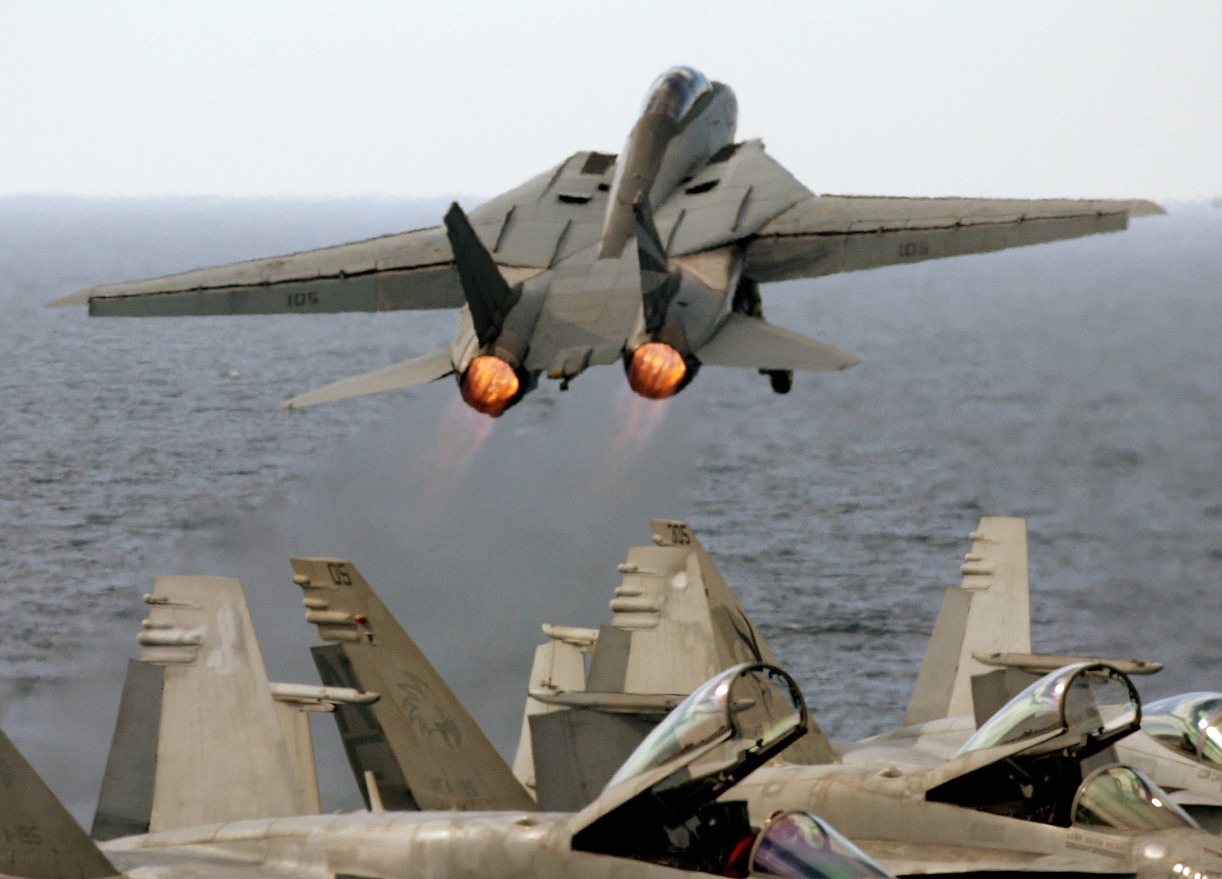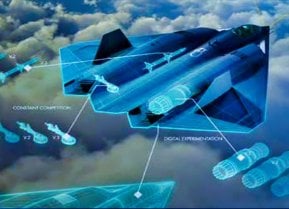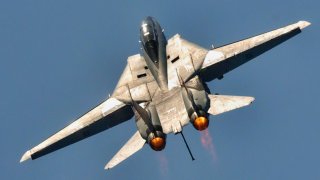The U.S. Navy's F-14D Super Tomcat Was Just Flying Awesomeness
Initially designed in the 1970s to prioritize air-to-air combat, the Tomcat was heavily armed but costly. The final F-14D variant included significant upgrades like the AN/APG-71 radar, LANTIRN targeting system, and enhanced engines.
Summary and Key Points: The U.S. military's F-14 Tomcat gained fame from "Top Gun" and "Top Gun: Maverick," but its true capabilities are less understood.

-Northrop Grumman proposed an advanced variant in the 1990s, the F-14D "Super Tomcat," which could have kept the jet modern enough to serve today.
-Initially designed in the 1970s to prioritize air-to-air combat, the Tomcat was heavily armed but costly. The final F-14D variant included significant upgrades like the AN/APG-71 radar, LANTIRN targeting system, and enhanced engines.
-Despite its potential, Congress chose the F/A-18 Hornet over further Tomcat development.
Why the F-14D 'Super Tomcat' Could Still Be Flying Today
The U.S. military's F-14 Tomcat has gained notoriety following the release of the box office hits Top Gun and Top Gun: Maverick.
While Goose and Maverick have become nothing short of household names, the true prowess of this fighter platform is less understood.
Perhaps even less known is the Tomcat variant manufacturer Northrop Grumman proposed in the 1990’s.
If the F-14D “Super Tomcat” remained in service as proposed, the jet would have been modern enough to remain an integral part of America’s aerial fleet.
A brief history of the F-14 Tomcat:
As the Cold War was beginning to heat up, the U.S. Navy desired a more sophisticated interceptor to defend its carrier battle groups from the USSR.
The service was directed to collaborate with the U.S. Air Force in the Tactical Fighter Experimental (TFX) program by Secretary of Defense Robert McNamara, resulting in the F-111.
However, the new platform was primarily designed as a low-level attack aircraft and not the dog-fighting powerhouse that the Navy desired.
By the mid-1960s, the service awarded Grumman a contract to research more advanced fighter designs. The resulting F-14 fighter took its maiden flight in 1970, just shy of two years after Grumman was awarded the contract.

From the beginning, the Tomcat was designed to prioritize air-to-air combat. Armament-wise, the fighter was constructed as a “bomb-truck.” Each F-14 is fitted with a General Electric Vulcan M61A-120mm gun with 675 rounds of ammunition, which is mounted internally. Eight hardpoints for carrying ordnance is also featured on the fighter, enabling it to carry a combination of short, medium and long-range air-to-air missiles. In addition to lugging AIM-7, AIM-9 and AIM-54 missiles, the F-14 can also carry air-to-ground ordnance like the Rockeye bomb and CBU cluster bombs.
Despite these solid capabilities, the Tomcat still represented the heaviest and most expensive fighter of its time when first introduced. In the 1970’s, VFAX was revived to result in a replacement platform for the F-4 Phantom.
The Light Weight Fighter Competition led to the development of the Boeing F/A-18 Hornet. With the introduction of this new multi-purpose fighter, Congress saw no more need for additional Tomcat fighters. For this reason, Grumman’s proposals to produce more modern variants were rejected.
Introducing the F-14D Super Tomcat:
The F-14D “Super Tomcat” was the final variant introduced by Grumman in the late 1980’s. Similar to its predecessors, the most modern Tomcat featured F110-GE-400 engines. Additionally, the Super Tomcat was fitted with the Airborne Self Protection Jammer, the AN/APG-71 radar, Joint Tactical Information Distribution System and other enhancements. The F-14D also has the LANTIRN targeting system that enables delivery of an array of laser-guided bombs for precision strikes in air-to-ground combat missiles.

As detailed by Air and Space, “With its Fast Tactical Imagery (FTI) system the F-14 can transmit and receive targeting/reconnaissance imagery in-flight to provide time sensitive strike capability. This F-14D is also capable of carrying the Tactical Air Reconnaissance Pod System (TARPS) providing in-theater tactical reconnaissance.” Perhaps most impressively, the F-14D could carry four joint attack munitions (JADM).
About the Author: Maya Carlin
Maya Carlin, National Security Writer with The National Interest, is an analyst with the Center for Security Policy and a former Anna Sobol Levy Fellow at IDC Herzliya in Israel. She has by-lines in many publications, including The National Interest, Jerusalem Post, and Times of Israel. You can follow her on Twitter: @MayaCarlin.
All images are Creative Commons or Shutterstock.
From the Vault
Russia Freaked Out: Why the U.S. Navy 'Unretired' the Iowa-Class Battleships
Battleship vs. Battlecruiser: Iowa-Class vs. Russia's Kirov-Class (Who Wins?)


